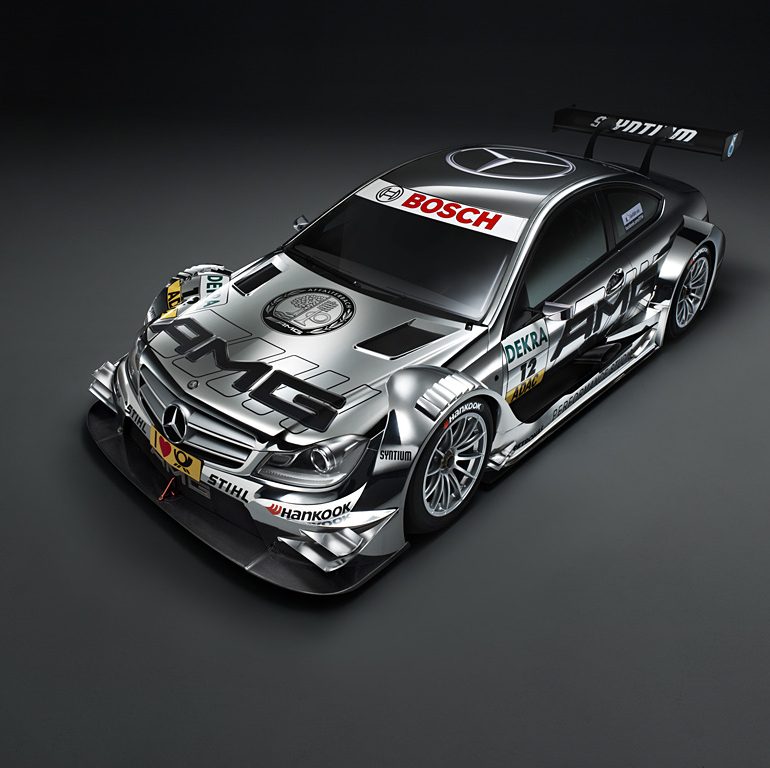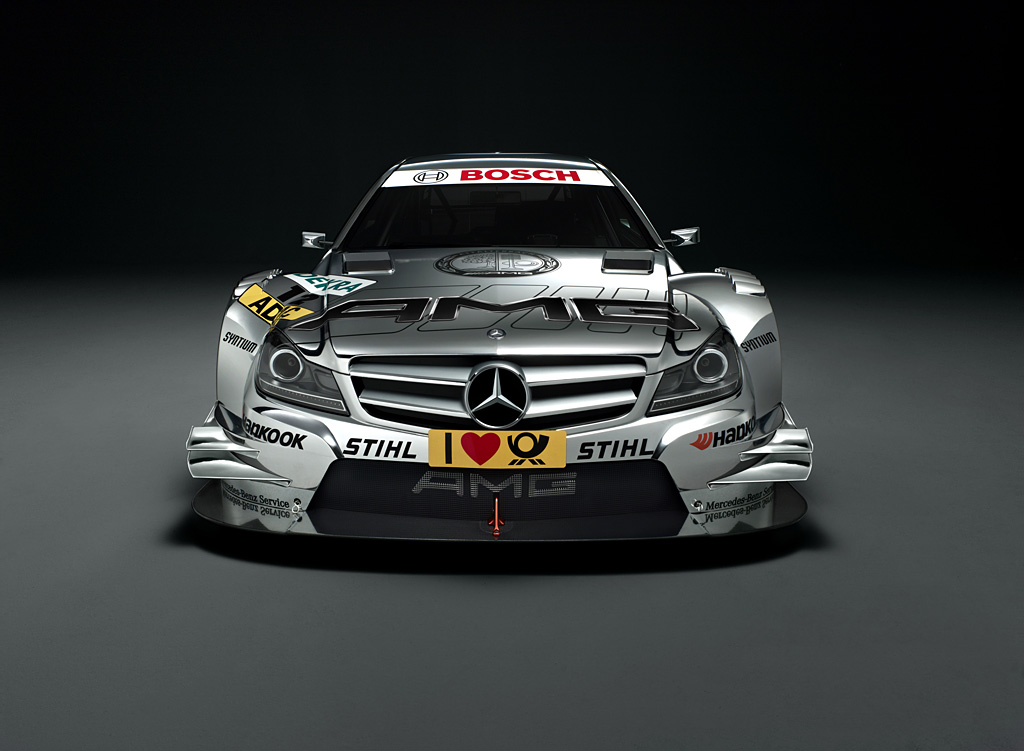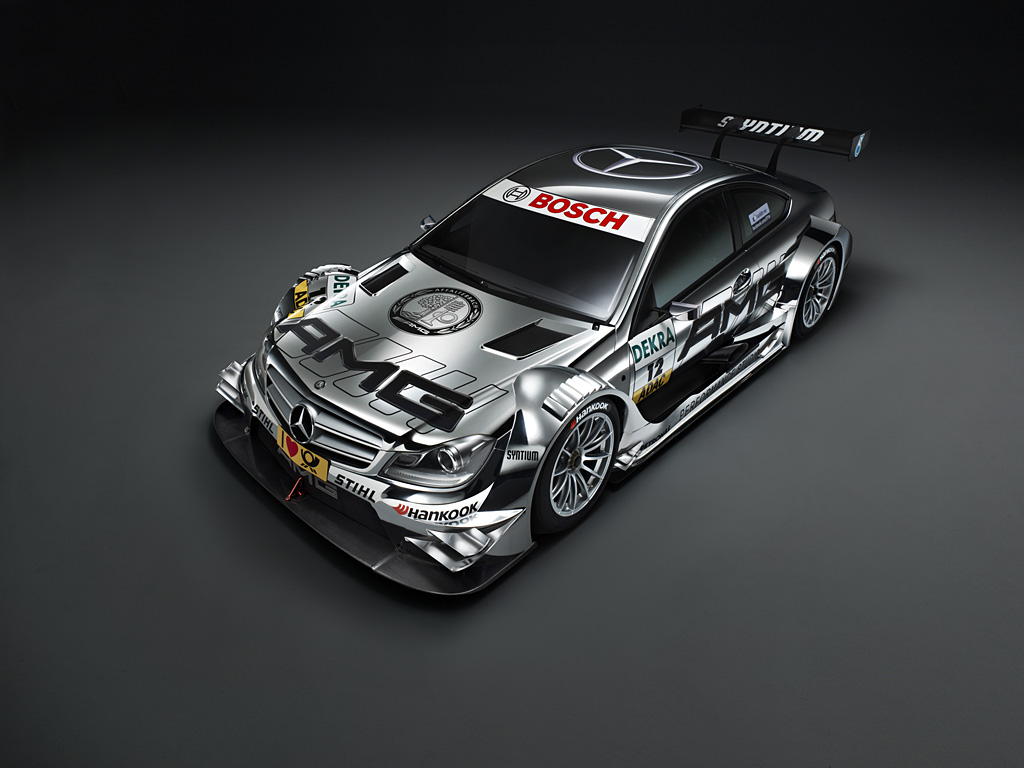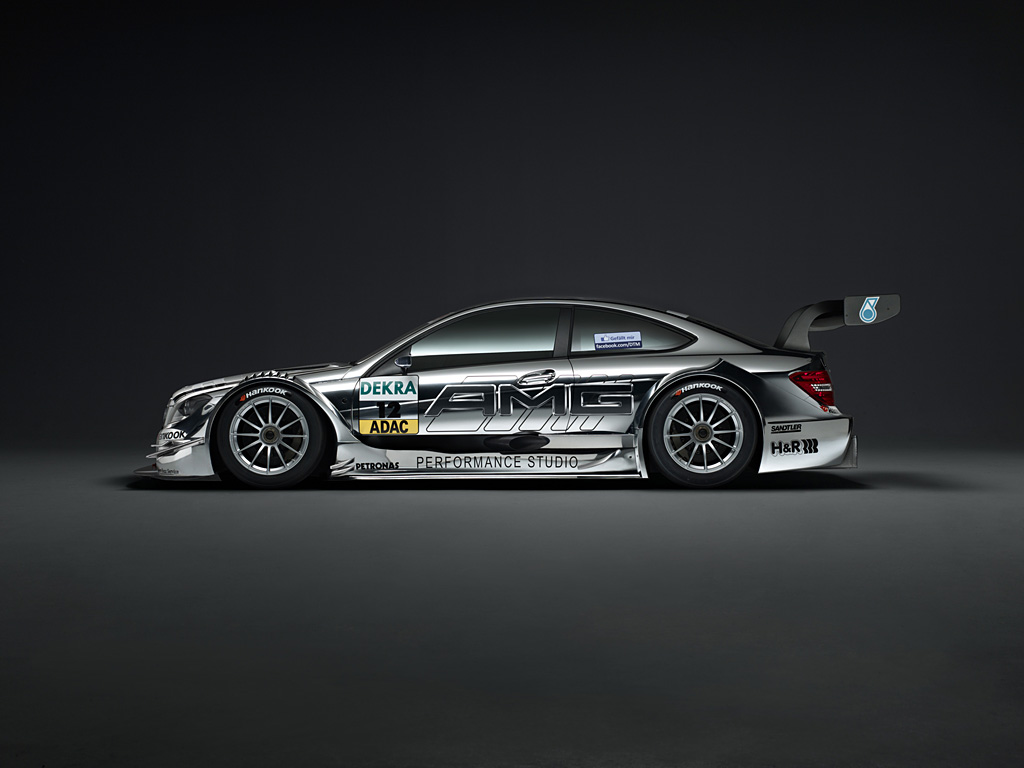2012 Mercedes-Benz C-Coupé DTM AMG
Mercedes-Benz chose the IAA International Motor Show in Frankfurt to present the new 2012 DTM AMG Mercedes C-Coupé. The new car is the successor to the AMG Mercedes C-Class, which scored 84 victories in 156 races to become the most successful vehicle in the 27-year history of the DTM. HWA AG began development, design and construction of the DTM AMG Mercedes C-Coupé in June 2010. The first chassis was assembled in June 2011, with the first vehicle completed in August.
The DTM AMG Mercedes C-Coupé was designed to meet the new and improved safety concept for 2012, which includes a state-of-the-art carbon fibre monocoque and a roll cage made of high strength steel. In order to improve driver protection in the event of an accident, all safety-related components such as the fire extinguishing system and fuel tank have been incorporated into the monocoque. Furthermore, each vehicle is equipped with six crash structures to give the driver additional protection to the front, rear and sides. These carbon fibre crash structures are designed to gradually absorb impact energy, so that the driver is not exposed to high deceleration forces.
The new safety concept was developed jointly by rights holder and promoter ITR e.V., the DMSB and the three manufacturers – Audi, BMW and Mercedes-Benz. In order to verify the performance of the DTM safety concept, the DMSB developed a test programme, which was carried out and analyzed by DEKRA, the independent testing organization. All tests were completed without any problems.
The new DTM AMG Mercedes C-Coupé is based on the latest Mercedes-Benz C-Class Coupé, which celebrated its world premiere in summer 2011. The C-Class Coupé rounds off Mercedes-Benz best-selling range and is offered with a choice of five engines – two diesel and three petrol units – developing from 115 kW (156 hp) to 225 kW (306 hp). The C-Class Coupé is manufactured at the Mercedes-Benz plant in Bremen. It’s the fourth model to be built on a single production line alongside the saloon and estate versions, plus GLK – a new production method for Daimler
In Detail
| submitted by | admin |
| type | Racing Car |
| built at | Germany |
| engine | 90° V8 |
| position | Front, Longitudinal |
| aspiration | Natural |
| displacement | 4000 cc / 244.09 in³ |
| power | 372.9 kw / 500 bhp @ 7500 rpm |
| specific output | 125.0 bhp per litre |
| bhp/weight | 476.19 bhp per tonne |
| torque | 500 nm / 368.8 ft lbs |
| body / frame | Carbon Fiber Monocoque w/Steel Roll Cage |
| driven wheels | RWD |
| front tires | 300 / 680 R18 |
| rear tires | 310 / 710 R18 |
| front brakes | Carbon Fiber Discs |
| rear brakes | Carbon Fiber Discs |
| front wheels | F 45.7 x 30.5 cm / 18 x 12 in |
| rear wheels | R 45.7 x 33.0 cm / 18 x 13 in |
| steering | Rack & Pinion w/Power Assist |
| f suspension | Double Wishbones w/Pushrod Inboard Spring/Damper Units |
| r suspension | Double Wishbones w/Pushrod Inboard Spring/Damper Units |
| curb weight | 1050 kg / 2315 lbs |
| wheelbase | 2750 mm / 108.3 in |
| length | 5010 mm / 197.2 in |
| width | 1950 mm / 76.8 in |
| height | 1210 mm / 47.6 in |
| transmission | 6-Speed Sequential |
| tran clutch | 3-plate Carbon Fibre |
| fuel capacity | 120 litres or 31.68 gal. |







